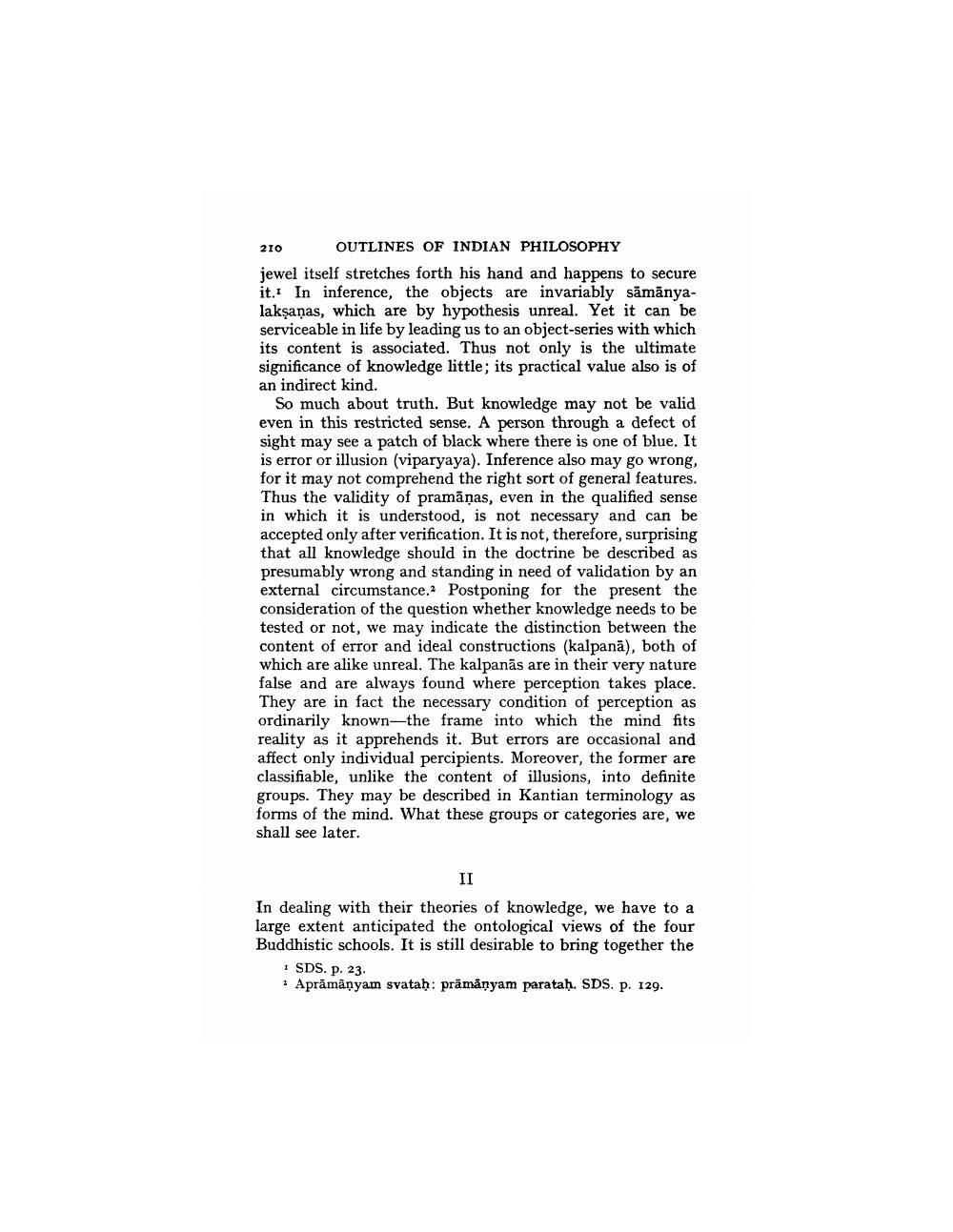________________
210 OUTLINES OF INDIAN PHILOSOPHY jewel itself stretches forth his hand and happens to secure it. In inference, the objects are invariably sāmānyalaksaņas, which are by hypothesis unreal. Yet it can be serviceable in life by leading us to an object-series with which its content is associated. Thus not only is the ultimate significance of knowledge little; its practical value also is of an indirect kind.
So much about truth. But knowledge may not be valid even in this restricted sense. A person through a defect of sight may see a patch of black where there is one of blue. It is error or illusion (viparyaya). Inference also may go wrong, for it may not comprehend the right sort of general features. Thus the validity of pramānas, even in the qualified sense in which it is understood, is not necessary and can be accepted only after verification. It is not, therefore, surprising that all knowledge should in the doctrine be described as presumably wrong and standing in need of validation by an external circumstance. Postponing for the present the consideration of the question whether knowledge needs to be tested or not, we may indicate the distinction between the content of error and ideal constructions (kalpanā), both of which are alike unreal. The kalpanās are in their very nature false and are always found where perception takes place. They are in fact the necessary condition of perception as ordinarily known—the frame into which the mind fits reality as it apprehends it. But errors are occasional and affect only individual percipients. Moreover, the former are classifiable, unlike the content of illusions, into definite groups. They may be described in Kantian terminology as forms of the mind. What these groups or categories are, we shall see later.
In dealing with their theories of knowledge, we have to a large extent anticipated the ontological views of the four Buddhistic schools. It is still desirable to bring together the
1 SDS. p. 23. · Aprāmānyam svatah: prāmānyam parataḥ. SDS. p. 129.




